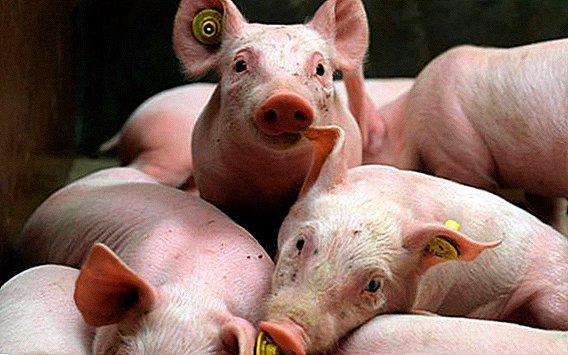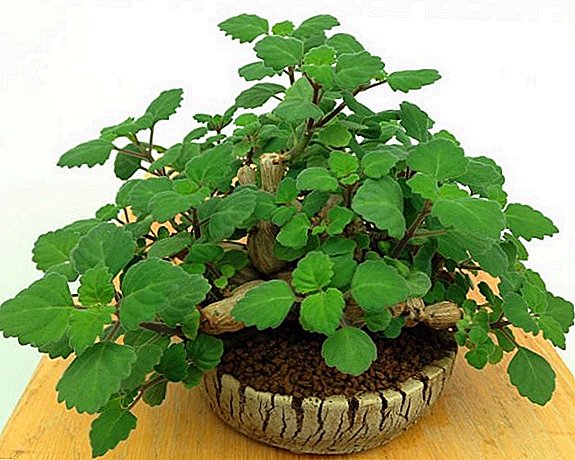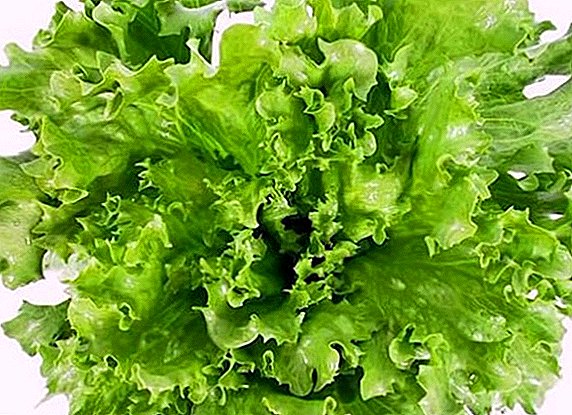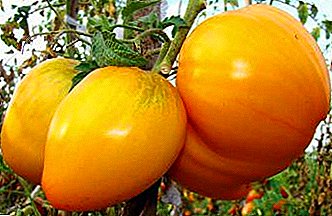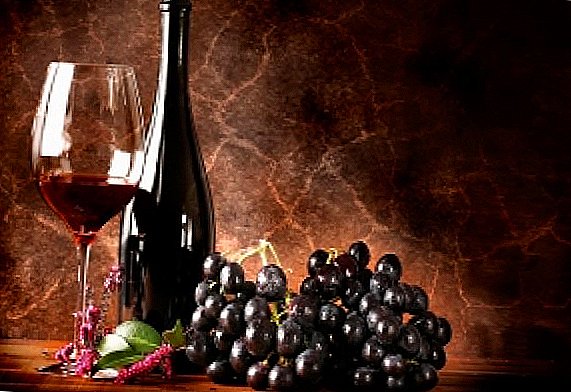
Many growers are engaged in the cultivation of grapes not just for fun and delicious berries, but also for the preparation of the best homemade wine. After all, winemaking, as well as viticulture, has been around for many millennia.
Over the years, countless ways to prepare homemade wines have been created and tried.
Although at first glance it is not so difficult to make wine, it is not worth starting this process without good preparation.
Today we will acquaint you with the features of cooking wine from the Isabella grape variety. In detail, we describe the technology of processing grapes and give examples of several recipes.
Features of grapes "Isabella": why the variety is so valued in winemaking?

This variety is one of the few that relate to both the dining and technical. In other words, it is grown both for fresh consumption and for processing. In particular, the variety has the following several advantages:
- Good survival rate and sustainability vigorous shrub.
- Attractive appearance of clusters and berries.
- High content of juice in the berries.
- When processing, you can get juices and fine red wine with a characteristic sourish flavor.
Thus, due to good stability, the variety is very easy to grow. Wherein, one bush is capable of producing quite abundant crops, which will allow you to prepare a large amount of wine. In particular, with the mass cultivation of this variety, from one hectare of vineyards it is possible to collect from 60 to 75 centners of the crop.
With good home care for grapes, you can achieve higher rates.
What are the healing properties of the Isabella variety?
Products made from this grape variety are very good. suitable for the treatment of colds and diseases of the upper respiratory tract. Eating both fresh Isabella grapes and wine made from it is an excellent expectorant. In addition, the wine perfectly warms with colds, so mulled wine is often made from it.
It is also interesting to read about the autumn pruning of grapes.
What you need to know about the technology of cooking wine at home?
In the preparation of wine, as in any other recipe, has its own characteristics and proportions. By taking into account all the features of the technology of wine making, you can get a product of very high quality, however, it is also very easy to make a mistake.
First of all, you need to prepare the necessary equipment and ingredients for the wine in advance. In addition to the grapes, the characteristics of the preparation and processing of which we will describe below, the sugar for fermentation is necessarily needed.
Also, you need to purchase and wash well a special fermentation tank, which could accommodate your entire grape harvest (or a few of these containers). When fermenting from the grape juice will air out, but the ingress of air to the juice itself is highly undesirable. Therefore, it is also necessary to have a special water seal, which is often occupied by ordinary rubber gloves.
And of course, you will need containers for bottling ready-made wine.
How to handle grapes for future use in winemaking?

To prepare the wine does not need to pick the most beautiful and large bunches of grapes. Any will do, but it is very important to inspect all of them thoroughly and remove rotten, dried and green berries. After all, they can very spoil the taste of wine.
Another very important note: do not wash the grapes before crushing the juice, it will be enough just to wipe the clusters with a dry, clean rag. Do not be afraid that some harmful bacteria will get into the wine - they all ferment and become completely harmless. After all, all these natural bacteria are just the opposite and serve as natural components of the fermentation of grape juice, acting as yeast substitutes.
Getting to squeezing the juice: how to get a clean product?

Before you get pure juice of grapes "Isabella", you need to make pulp from it, that is, crush grapes. In order to suppress it, you can use the ordinary crush, which is used to prepare mashed potatoes.
Of course, ideally it is better to use a press, but for small amounts of grapes at home, just do without it. Your main task - to crush every berry, so she gave her juice.
Next, the pulp must be sent to a colander or gauze. If the first time does not work well drain the juice, you can skip it through a colander again. You can use the resulting juice both for further wine preparation, and by boiling with the addition of sugar to get the finest juice.
How not to spoil the future of wine: features of the fermentation of grape juice

In order for the juice to ferment well, he needs glass and spacious dishes.
For this, large bottles are best suited, in which, in the old days, our grandparents kept wine or moonshine. We need to take large - 5-10 liters. It is very important that they are perfectly clean and dry, which is why we recommended to prepare them in advance.
It is necessary to fill with juice only a third of the vessel, since the rest of the space will be necessary for the juice to fully ferment.
Further, to the juice you need to add the amount of sugar, which is indicated in the recipe and close the bottle with a special lid or pull on it a glove. In order for our wine to start to ferment well, keep it standing in a warm enough, but not hot, place.
But the variant of technology described by us is not ideal and the only one, it can rather be called universal. To find out how you can still prepare the wine "Isabella" at home, we invite you to familiarize yourself with the following recipes.
homemade wine recipes
The recipe for grape wine from "Isabella" №1

According to this recipe, after the juice has fermented well and has become, in fact, already a real wine, it must be carefully poured into another vessel. The most important thing is that the dregs and tartar settled on the bottom should in no way be mixed with the pure product. The bottle in which the juice wandered, thoroughly washed and dried.
The resulting young wine needs a little sweetenerbecause it will be too sour to consume. For this, 100 or 150 grams (depending on your personal preferences) of sugar is added to 1 liter of liquid. All this is thoroughly mixed, until it is completely dissolved, and pour the resulting sweetened wine back into the already dried bottle.
It is very important that the wine obtained is tightly and tightly closed so that neither air nor moisture is supplied to it.
In a month you will receive the finest home-made wine. It can be safely taken and bottled. In bottles it, too, needs to be closed very tightly.
For storage, the cold cellar is best suited, although in its absence it is possible to put Isabella in the refrigerator. It is worth noting that due to the sugar added to the young wine, the resulting product will have a pleasant sweetness. Usually, the strength of such a wine is equal to 11-13 rpm, which is pretty much not much, although you shouldn’t get involved in it either.
The recipe for grape wine from "Isabella" №2

This recipe will suit you in the event that you are worried that the wine can not ferment without the addition of yeast and sugar. In this recipe, the technology itself for making juice is significantly different.
In particular, after you have thoroughly washed the berries, the pulp is not squeezed out, but sent to a large saucepan and put on the fire. It can never be boiled, simply heat up to 75º and immediately remove.
Slightly stirring, pulp should be cooled to a temperature of 23º. To the resulting consistency, a yeast solution of 2% aged for three days is added. After that, the pulp should be covered with a wooden circle and with its help it should be thoroughly pressed and pressed through a colander. After that, add sugar to the juice, with a calculation of 0.1 kilogram per 1 liter, and leave it to ferment the resulting texture.
For a good and successful fermentation, the tank should be closed either with a hydraulic lock or with a glove.
After the fermentation is completed, a young wine is recommended. leave in the same vessel for another couple of months. Thus, it will settle much better, and after bottling the sediment will practically not appear.
After that, it also should be carefully drained from the vessel in which it wandered and defended, and once again sweetened. At this time, 1 liter should be added from 120 to 180 grams, focusing on the taste of the resulting young wine and on your own preferences. When the sugar is completely dissolved, the wine will be ready for bottling and storage in a sealed form.
The unknown author of this recipe gives some more very useful tips for the production and storage of the product obtained:
- Since this obtained wine will be considered still young, there is a way to speed up the process of its ripening. To do this, corked in bottles, it needs to be pasteurized for several hours. The temperature for this can not be raised above 60 degrees, Vedic we pasteurized alcohol.
- Best of all, wine is stored in dark and cool rooms, the temperature in which does not rise above 12ºС. In addition, the bottle is best kept in a horizontal position.
The recipe for grape wine from "Isabella" №3

The third recipe will be clearer in indicating the proportions for wine. In particular, it will require:
- 10 kilograms of grapes "Isabella".
- 3 kilograms of granulated sugar (it is recommended to use only the highest grade).
The cooking process should begin with the fact that unwashed and enumerated grapes are sent to a large enameled vessel, where they are carefully kneaded.
To better crush it, you can add grapes to the pot in small portions. The resulting mass is simply covered with gauze and left in the same enamel vessel for fermentation for 5 days.
It is very important to put the pot in a warm place, so that the grapes are guaranteed to ferment. During fermentation, the grape mass twice a day should be well mixed using a wooden spatula or spoon.
After the fermentation process passes well enough and the mass rises significantly, it is sent to a colander. To squeeze out all the juice from the pulp (grape mass), you can squeeze it again through gauze, which will give the juice extra purity.
All necessary sugar is added to the resulting juice, mixed thoroughly and poured into specially prepared glass vessels (jars or bottles) for further fermentation. This time, the bottle must be covered either with a special cap or with a rubber medical glove.
In the glove it is important to pierce your fingers so that you can understand when the wine will be ready. At room temperature the fermentation process can take from two to three weeks, its completion will be confirmed by a lowered glove.
Starting to filter the resulting young wine is only when it brightens and there will be no air balls in it. Filter out slowly and carefully, trying to leave at the bottom of the entire sediment and yeast.
Young wine should not be bottled immediatelybecause it will still be precipitate. It is better to pour it into a vessel washed after fermentation and let it stand for another month, while regularly pouring it and discarding the precipitate.
After all these labor-intensive processes, the wine can be bottled and sent to the cellar or to the refrigerator. The real maturity of the wine "Isabella" will come in about a month, then you can taste it yourself and offer it to your friends.
The recipe for grape wine from "Isabella" №4

It is worth paying attention to another recipe, which, unlike the ones described above, involves adding water to the grape mass. Thanks to this, you can get more wine, but its fortress will be a little smaller. Cooking wine should follow these steps:
- After you have transferred the grapes, as we recommended to do this using a universal technology, the resulting pulp should be sent to an enamel or plastic container.
- In relation to the total grape mass, about 30-40% of water and about 40 grams of sugar per liter are added. This mixture is left for 4-5 days so that it starts to ferment. All this time, pulp must be stirred, while destroying the frothy cap that will be formed during fermentation. When you notice that the cap is formed very quickly, the pulp should be sent to gauze for squeezing the juice.
- The pressed liquid must be mixed with boiled water, the amount of which must be at least 40% of the total grape mass. Thus, we get grape mash, which should be poured into bottles or cans (filling them only a third). Wearing a glove immediately not worth it. It is necessary to plug the hole in the bottles with cotton wool, which will delay the foam formed from fermentation.
- When the wort begins to ferment more calmly, a glove is pulled onto the neck of the bottles or it is covered with a special cap. Do not forget to pierce a small hole in the glove through which gas will escape.
- The fermented wine merges with the vessel so that all the dregs and settled elements remain at the bottom. The bottle, or other vessel used by you, is thoroughly washed and dried, and sugar is added to the resulting wine, with the calculation of 200 grams per 1 liter. Sugar must be dissolved, a little warming up the wine.
- Next, send this wine back to a dry bottle and let it brew for at least another month. During this time, it can be poured a few more times to get rid of the sediment.
- Already more or less mature wine can be bottled, tightly closed and sent to a cool and dark place. Before bottling, you need to try it, and if the wine does not seem sweet enough to you, you can add a little more sugar to it, but no longer stir or warm it.
Prepared according to this recipe and vystoyannoe in a cold place, the wine will be fully ready for use in a month. There will be not a lot of revolutions in it, but this “Isabella” will be very sweet, you can even give it a try.



